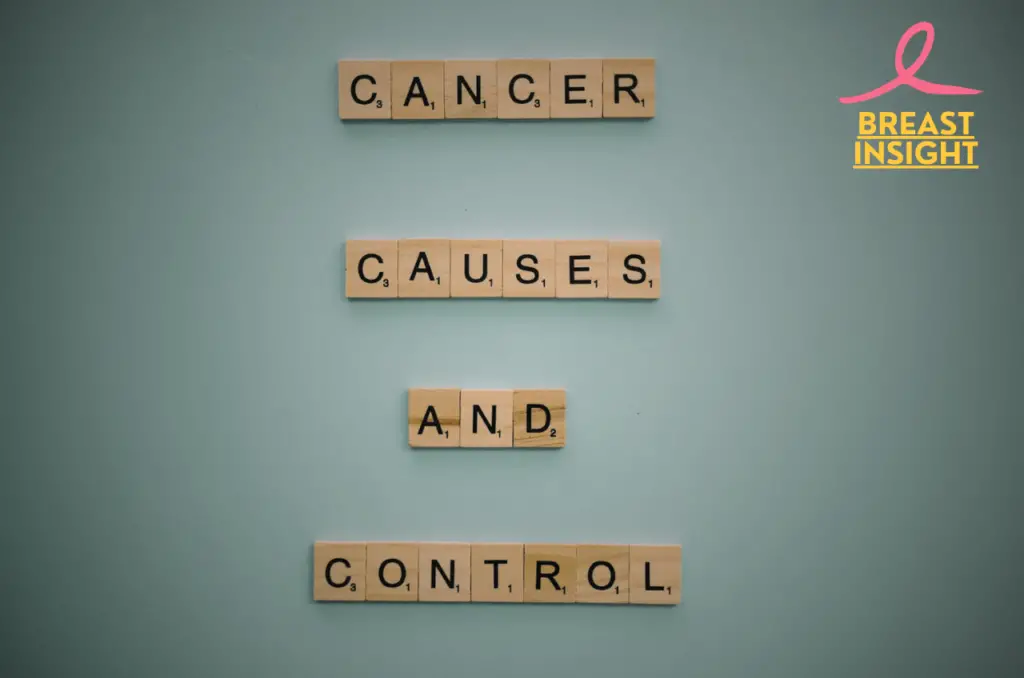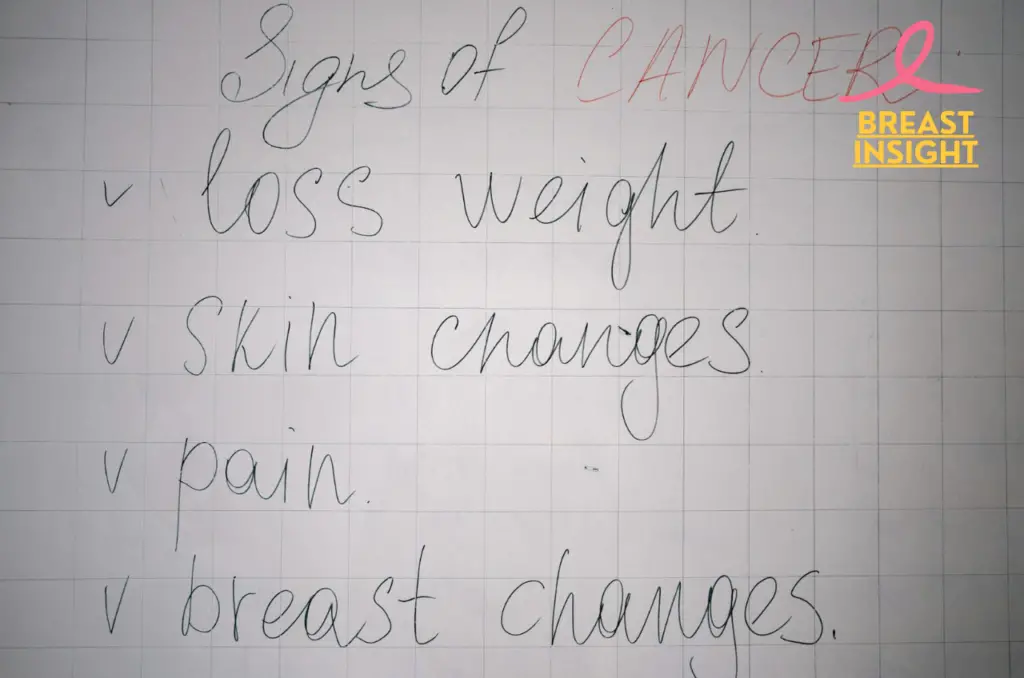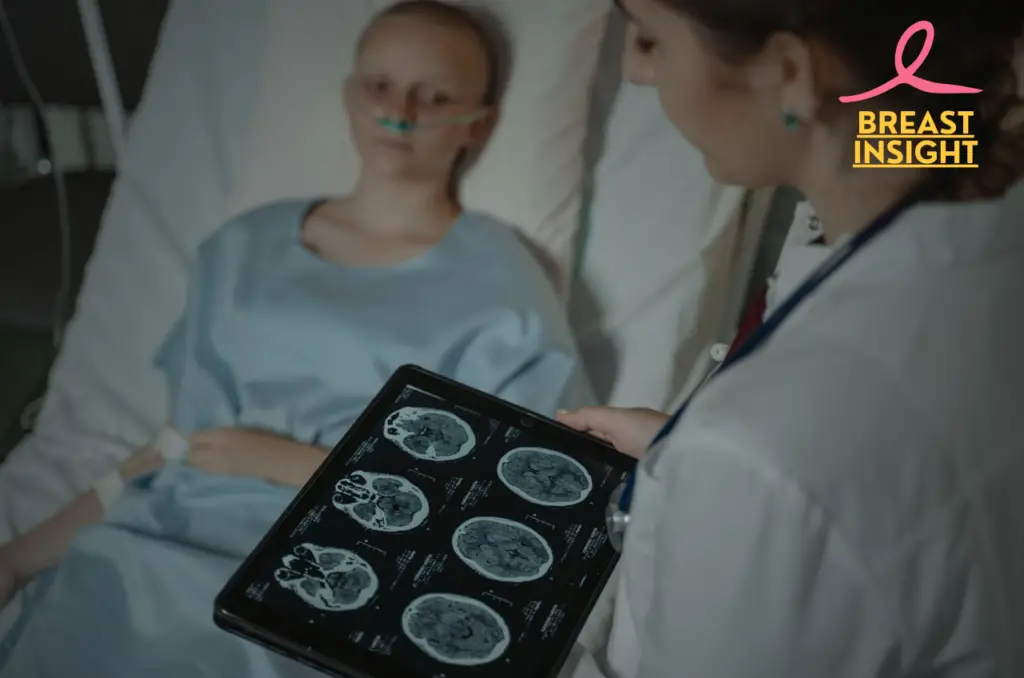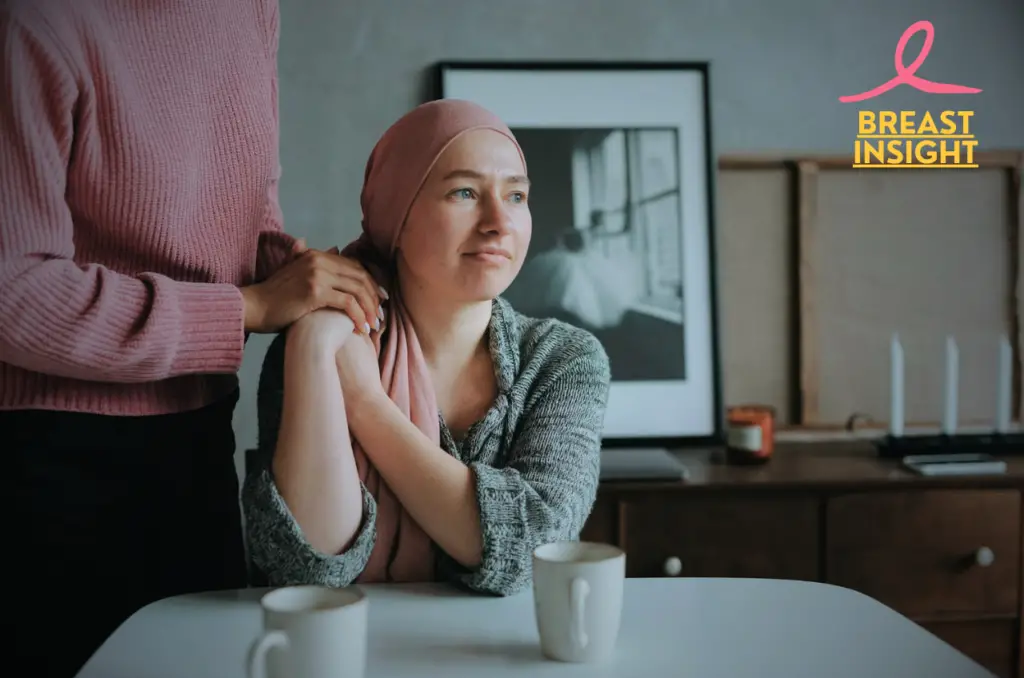What is cancer? A word we continuously hear but few know what it is. It is not a disease but a group of different diseases whose cell origination usually lies in any organ in a human body. Cancer is an unavoidable fact to all in this world as it causes millions and will keep on being one of the leading causes of death to remain in this world.
Cancer is very common yet so little known. It thrives a lot on fear. Of course, knowledge is the power when it comes to this great enemy. Misleading cancer will in turn make it possible for us to better prepare against it, detect it, and fight it. Through this in-depth guide, we delve into the ins and outs of cancer beginning from causes and symptoms, to diagnosis and treatment and beyond. Let us ride it together with this tour so as to better understand how cancer works and equip ourselves with lifesaving information.

Understanding What is Cancer?
Understanding the malady known as cancer is in itself a task because it is a complex group of diseases through abnormal cell growth. To deeply understand cancer, we will have to probe its definition, the progression leading up to it, common forms, and for that matter, the difference between benign and malignant tumors.
Definition of Cancer
The American Cancer Society defines cancer as a disease wherein some of the body’s cells grow out of control and proliferate uncontrollably to invade other parts of the body. The National Cancer Institute (NCI) defines cancer as a genetic disease resulting from changes made to genes that control the way our cells work, particularly how they grow and divide.
How Cancer Develops
Cancer develops through a multi-step process:
- Initiation: Genetic changes occur in a cell
- Promotion: The altered cell divides and multiplies
- Progression: More genetic changes are acquired
- Metastasis: Cancer cells invade new parts of the body
These genetic changes can affect three main types of genes:
| Gene Type | Function | Effect When Altered |
| Oncogenes | Promote cell growth | Excessive cell division |
| Tumor Suppressor Genes | Slow cell division | Uncontrolled cell growth |
| DNA Repair Genes | Fix damaged DNA | Accumulation of mutations |
Most Prevalent Types of Cancer
The most common types of cancers are:
• Carcinoma: Most cancers arise in the skin or tissues that line the organs
• Sarcoma: Origins in connective tissue
• Leukemia: Affects blood cells and blood forming tissues
• Lymphoma and Multiple Myeloma: Affects cells of the immune system
• Melanoma: Origins in pigment producing cells
Difference between Benign and Malignant Tumors
Tumors may be either benign or malignant
• Benign tumors
- Grows slowly
- Not invasive to neighboring tissues
- Do not invade other parts of the body
- Can frequently be removed with surgery
• Malignant tumors
- Grow quickly
- Spread to tissues on either side
- May metastasize to other parts of the body
- Often require more comprehensive treatment
Understanding these basic concepts about cancer enables one to appreciate its impact and the significance of early detection and treatment.

Causes and Risk Factors
Causes and risk factors of cancer are relevant to prevention and early detection. Let’s proceed towards the different factors that trigger the development of cancer.
A. Genetic Factors
Genetic mutations form a significant part of the development process in cancer. These could be inherited or occur as somatic changes over time. Mutation of genes in oncogenes, tumor suppressor genes, and DNA repair genes leads to uncontrollable cell proliferation.
B. Environmental Influences
Environmental exposures also play a crucial role in cancer risk. Major environmental sources include:
- UV radiation
- Air pollution
- Certain chemicals
- Infectious agents
C. Lifestyle choices
Our daily habits can influence cancer risk. Main lifestyle factors include:
- Smoking
- Consumption of alcohol
- Diet
- Physical activity
D. Age and gender considerations
| Factor | Impact on Cancer Risk |
| Age | Risk increases with age |
| Gender | Some cancers are more common in specific genders |
E. Previous medical conditions
Some medical conditions are related to cancer risk, such as:
- Chronic inflammation
- Immunosuppression
- Hormonal imbalance
Understanding these risks helps in the identification of prevention strategies and in finding those who would be most likely to benefit from screening at an early age. There are modifiable risk factors, and there is the risk factor of genetic predisposition that can be known about and acted on in prevention.

Symptoms and Signs
Common symptoms and signs of cancer
Cancer can present itself with very common signs that affect the entire body. Among them are;
- Loss of weight without a specific cause
- Fatigue
- Fever
- Pain
- Change in skin color or texture.
The skin may turn a different color or change its color and texture. Essential to mention is that these signs may be attributed to other diseases but in the case of such signs persisting for long or worsening, they should be investigated by seeking a health care professional.
Organ-specific symptoms
Depending on the major organ or system affected, some cancers can lead to specific symptoms. This chapter summarizes some of the organ-specific symptoms in a table.
| Organ/System | Potential Symptoms |
| Lung | Persistent cough, coughing up blood |
| Breast | Lump or thickening, changes in size or shape |
| Colon | Changes in bowel habits, blood in stool |
| Skin | New moles or changes in existing moles |
| Prostate | Difficulty urinating, frequent urination |
When to See a Doctor
You should visit a doctor when:
- Sensations last more than two weeks
- Odd lumps or growths
- Unusual bleeding or bruising
- Some moles exhibit a change in moisture
- Ache or soreness that persists
The first thing in a successful cancer treatment procedure is early detection. Many symptoms do not happen due to cancer, but still, it is good to err on the safe side and seek professional medical advice.

Diagnosis and Staging
Screening Methods
Early diagnosis of cancer leads to successful treatment. This is possible with the help of routine screening methods that detect cancer before developing any symptoms. Most common screening techniques are:
- Mammograms for breast cancer
- Pap smears for cervical cancer
- Colonoscopies for colorectal cancer
- Low-dose CT scans for lung cancer
Diagnostic Tests and Procedures
After developing a suspicion of cancer, several diagnostic tests and procedures are carried out to ensure the presence of cancer, where the features of these tumors are defined:
| Test/Procedure | Purpose |
| Biopsy | Examine tissue samples for cancer cells |
| Imaging tests (CT, MRI, PET) | Visualize tumors and their location |
| Blood tests | Detect tumor markers and assess overall health |
| Genetic testing | Identify genetic mutations associated with cancer |
Cancer Staging Explained
Tumor staging gives information on how extensive is the spread of cancer throughout the body. The TNM system is the most often utilized:
- T: Extent and size of primary tumor
- N: Extent of spread to the nearby lymph nodes
- M: Presence of metastasis or extending to distant organs
The stages usually run from 0 (non-invasive) up to stage IV (advanced, metastatic).
Significance of Early Detection
Early detection drastically improves outcomes in cancer cases through the following ways:
- Many treatment options
- Probabilities increase the possibility of successful treatment
- Lessens risk to develop complications
- Higher quality of life during treatment
Regular follow-ups and adherence to the recommended screening guidelines have thus been considered crucial factors in relation to an early detection of oral cancer and, therefore, an improved prognosis.

Treatment Modalities
There are various modalities of treatment that are used for the treatment of cancer as per the type and stage of cancer. There are primarily the following treatments:
A. Surgery
Surgery is considered to be one of the most important approaches toward the treatment of cancer, particularly for solid tumors. This is a minimally invasive process of removing cancerous tissue from the human body.
Types of cancer surgery:
- Curative surgery
- Debulking surgery
- Palliative surgery
B. Chemotherapy
Chemotherapy is the use of powerful drugs to kill cancer cells everywhere in the body. It is given orally or intravenously as a liquid and sometimes applied directly to the affected area on the skin.
C. Radiation therapy
Radiation therapy is the use of powerful rays to injure or kill cancer cells within a particular region of the body.
| Type | Description | Common Uses |
| External beam | Radiation from outside the body | Various cancers |
| Internal (Brachytherapy) | Radioactive material placed inside the body | Prostate, cervical cancer |
D. Immunotherapy
Immunotherapy employs your body’s very own immune system to combat cancer cells. Here are ways it can:
- Studies have shown an elevated activity of the immune system
- Cancer cells get marked for death
- Immune cells performance is boosted
E. Targeted therapy
Targeted therapy is targeted against specific molecules involved in the process of cancer growth and spread. It contrasts with chemotherapy in that it aims to cause as little damage to normal cells as possible.
Now that we have discussed the major treatment options, it is time to note that many cancer treatment plans integrate several of these strategies toward optimal benefit.

Living with Cancer
Living with cancer is different: there are various strategies and resources that can be used for patients on this road. Let us briefly discuss the key aspects of managing life with cancer.
Coping Strategies
Coping with cancer encompasses two aspects: emotional and practical:
- Find emotional support within family, friends, or among like-minded people at the support groups
- Practice techniques such as meditation and yoga for stress management
- Be aware of your disease and the available treatments
- Fix realistic goals and distribute tasks accordingly
Supportive Care
Supportive care: Quality of life during treatment of cancer
| Type of Care | Description |
| Pain management | Medications and therapies to alleviate discomfort |
| Psychological support | Counseling and therapy to address mental health |
| Palliative care | Focuses on symptom relief and improving quality of life |
| Home care | Assistance with daily activities and medical needs |
Nutrition and Physical Activity
Appropriate nutrition and physical activity can greatly improve your well-being during cancer:
- Eat well through a healthy diet full of fruits, vegetables, and lean proteins
- Hydrate by drinking a lot of water
- Do light to moderate exercise approved by your health care team
- Coordinate with an oncology nutritionist
Managing Side Effects
Cancer treatments can have side effects, but ways of controlling these are also available:
- Fatigue: Have rest periods and prioritise one’s activities.
- Nausea: Use anti-nausea medication and eat little frequent meals.
- Hair loss: Consider a wig, scarf or learn to live with it
- Immune system suppression: Make sure to follow good hygiene principles and keep away from crowds.
Now that we have addressed some ways of surviving with cancer, let’s talk about how to prevent the risk of developing cancer in the first place.

Primary Prevention and Risk Reduction
Healthful lifestyle habits
Healthful lifestyle habits significantly reduce the risk of the occurrence of cancer. A healthy diet with adequate intake of fruits, vegetables, and whole grains provides the body’s requirements in nutrients and antioxidants. Keeping the immunity system active along with maintaining an appropriate weight through physical activity also helps prevent cancer. Avoiding alcohol consumption and quitting tobacco smoking works as a boon to the patients by preventing them from having cancer.
Screening leads to early detection
Early detection through regular screenings can significantly improve cancer outcomes. The various cancers require different screening methods:
| Cancer Type | Screening Method | Recommended Frequency |
| Breast | Mammogram | Every 1-2 years (age 40+) |
| Colorectal | Colonoscopy | Every 10 years (age 45+) |
| Cervical | Pap smear | Every 3 years (age 21-65) |
| Lung | Low-dose CT scan | Annually (high-risk individuals) |
Vaccinations
Some vaccinations may protect you from infections that might cause cancer:
- HPV vaccine: A vaccine that protects against the human papillomavirus, thus lowering your chance for cervical and other cancers and anal cancers.
- Hepatitis B vaccine: Reduces the risk for liver cancer as it prevents infection with hepatitis B.
Avoid known carcinogens
The last area is preventing your exposure to known carcinogens:
- Avoid direct exposure to sun and use protection
- Avoid secondhand smoke
- Test your home for the presence of radon
- Use protective equipment in the workplace when working with hazardous material
- Use organic products to avoid pesticides exposure
Through the above prevention strategies, people will lessen their risk of getting cancer, promoting a healthier lifestyle.

Conclusion
From our learning on cancer, we have walked through its complications from its inception to effects it has on people and society. Cancer has never been an easy battle in modern medicines, but there is still hope with innovations in treatments as research into this disease continues.
Key Takeaways
- Cancer is a collection of diseases characterized by rapid growth of abnormal cells
- Several factors cause cancer, including genetic alterations and environmental exposures
- Accurate early detection coupled with proper staging is vital for treatment
- Treatment therapies are evolving constantly, and targeted therapies along with immunotherapies have been promising
Future of Cancer Research and Treatment
| Area | Current Focus | Future Potential |
| Genetics | Identifying oncogenes and tumor suppressor genes | Personalized treatment based on genetic profiles |
| Immunotherapy | Enhancing immune system response | Combination therapies for improved efficacy |
| Early Detection | Developing sensitive screening methods | Non-invasive liquid biopsies for multiple cancer types |
| Prevention | Understanding risk factors | Targeted interventions for high-risk populations |
As we bring this chapter to a close, we should recall that though formidable, the very challenges cancer poses are minimized through research, prevention, and treatment of this disease. Ongoing support for cancer research and awareness remains key in this unceasing fight against one of humanity’s most persistent health challenges.
Frequently Asked Questions (FAQs)
1. What are the early signs of cancer?
Early cancers are different between types and can include unexplained weight loss, persistent fatigue, skin changes, prolonged cough, and unusual bleeding. Most cases are detected using regular screenings, with early detection improving outcomes with treatments.
2. How is cancer diagnosed?
Today, cancer is diagnosed by careful physical examination along with imaging tests; for instance, X-rays, MRIs, or CT scans, and biopsies. Certain types are diagnosed with the help of blood tests identifying markers. The sooner it is diagnosed, the better the treatment options and outcomes.
3. What are the main causes of cancer?
These are mutations in genes, exposure to environmental conditions such as irradiation or chemical damage, lifestyle choices for instance smoking or poor diet, and infections. Other cancers also have viruses such as HPV associated with them and prevented by vaccines.
4. Can cancer be prevented?
While not all cancer can be prevented, many cancers can be reduced by adopting a healthy lifestyle, avoiding tobacco, limiting alcohol, maintaining a healthy weight, and getting regular screenings. Vaccines such as the HPV and hepatitis B vaccine help prevent certain cancers.


7 thoughts on “What is Cancer? Causes, Symptoms, and Treatment Options”